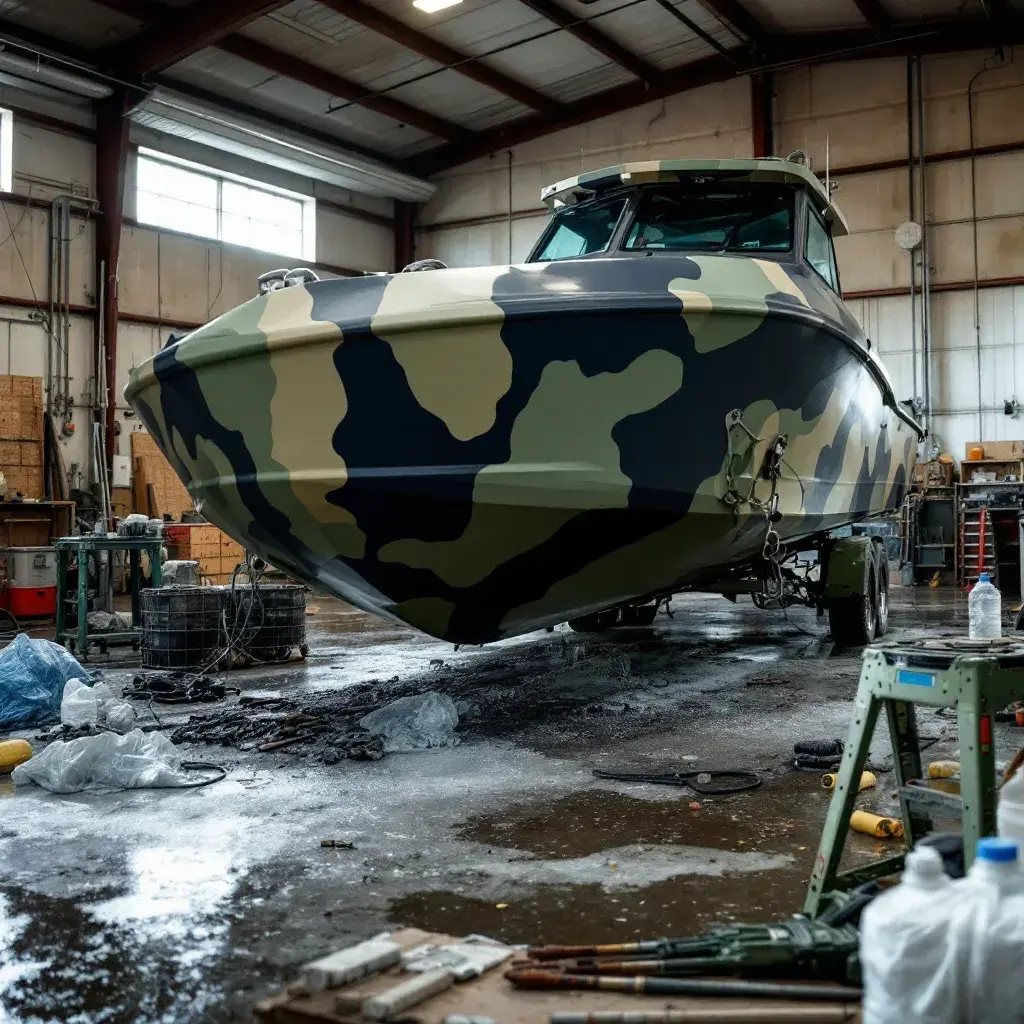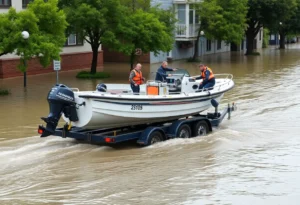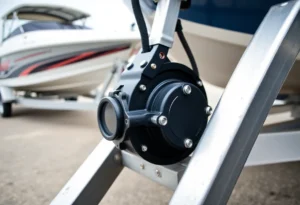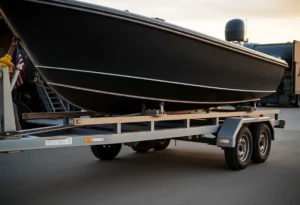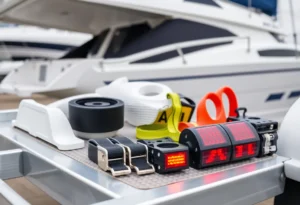When it comes to tactical operations and covert missions, camouflaging your military boat trailer can be essential for concealing equipment and avoiding detection. With the right paint techniques, you can blend your trailer seamlessly into various environments, whether you’re navigating dense forests, open deserts, or shorelines. In this article, we’ll cover practical steps and methods for applying camouflage patterns that enhance concealment and durability, tailored specifically for military-grade trailers.
Why Camouflage Matters for Military Boat Trailers
Military boat trailers often carry valuable equipment and can be used in operations requiring a low visual profile. Properly camouflaging the trailer helps avoid unwanted attention and keeps equipment secure. Camouflage also helps minimize the reflection of light on metal surfaces, reducing the risk of being spotted in open terrain.
Preparing Your Trailer for Painting
Before applying any paint, preparation is key. This includes cleaning the trailer to remove any dirt, dust, or previous paint remnants. To ensure the camouflage paint adheres well and lasts longer, follow these steps:
- Clean Thoroughly: Use a strong degreaser or cleaning agent and a stiff brush to scrub down the trailer. Removing oils, grease, and grime is essential to create a surface the paint can bond to.
- Sanding the Surface: Lightly sand the trailer’s surface to create a smooth but textured surface that will help the primer and paint stick better.
- Apply a Primer: Use a primer designed for outdoor or tactical-grade applications. Priming is especially important to increase the paint’s adherence and durability in various environmental conditions.
Choosing the Right Camouflage Colors
Selecting the appropriate camouflage colors depends on the environments where the trailer will primarily be used. Here are a few common color schemes for military applications:
- Woodland: Use a mix of dark greens, browns, and black to blend into forested areas.
- Desert: Choose shades of tan, beige, and light brown to mimic sandy or rocky environments.
- Snow/Winter: Use whites, light grays, and subtle blue undertones to blend into snowy conditions.
- Urban: Dark grays, slate, and black are ideal for urban and industrial areas.
Many professional camouflage paint sets are available with color combinations specifically formulated for different terrains.
Techniques for Applying Camouflage Patterns
With your trailer prepped and your colors selected, it’s time to apply the camouflage pattern. Here are some effective methods to create a natural, disrupted pattern for concealment.
1. Freehand Painting
Freehand painting allows you to create custom camouflage patterns unique to your trailer. For this technique:
- Start with the lightest color as a base coat, covering the entire surface.
- Once dry, layer the darker colors on top in irregular, natural shapes.
- Use a paintbrush or sponge to blend the edges for a less defined look, which helps achieve a realistic, organic effect.
Freehand painting provides flexibility to create a pattern that mirrors specific environmental conditions.
2. Stenciling with Natural Objects
For a rugged, realistic texture, consider using stencils created from natural objects like leaves, twigs, or branches. This method gives a unique, forest-floor look that works well in wooded environments. Here’s how:
- Lay down the lightest color as your base coat.
- Place natural objects over sections of the trailer.
- Spray or brush darker colors over the objects, then remove them to reveal patterns that mimic foliage or brush.
Repeat the process with multiple colors and different items to achieve a layered effect.
3. Sponge Painting for Blending
Sponge painting is an effective way to break up larger areas of color, adding dimension to your camouflage pattern.
- Dab a sponge into the chosen paint color and gently press it onto the trailer in an irregular pattern.
- Alternate colors and overlap them slightly for a blended, disrupted look.
- This technique helps to soften hard lines, making the pattern more natural and less geometric.
4. Spray Techniques for Fading Effects
For a more blended look, try using a spray technique to create a faded camouflage effect:
- Start with a light base coat.
- Hold the spray can further back from the trailer to create a softer, misted look with darker colors.
- Apply in short bursts, concentrating on edges where colors overlap to blend them naturally.
This method works well for trailers that need to blend into mixed environments, as the fading effect mimics the natural transition between different terrain elements.
Additional Tips for Effective Camouflage
To further enhance the camouflage effect, keep these tips in mind:
- Apply Matte or Non-Reflective Paint: Glossy finishes reflect light, which can reveal your trailer’s location. Use matte paints designed for outdoor use to avoid unwanted reflections.
- Maintain the Paint Regularly: Camouflage paint can fade or chip over time, especially in harsh environments. Regularly inspect the paint and touch up areas as needed to maintain effective camouflage.
- Consider Seasonal Patterns: If your trailer is used in different environments throughout the year, consider applying a removable or temporary layer of paint that can be updated with the seasons.
Final Thoughts
Camouflaging your military boat trailer with the right paint techniques is an essential step in maintaining tactical discretion and protecting valuable equipment. By following these methods and selecting the best colors for your operational terrain, you can ensure your trailer remains as concealed as possible. With a little preparation and creativity, you can achieve a professional camouflage finish that’s both effective and durable for your mission needs.
Whether you’re preparing for extended field operations or simply upgrading the appearance of your trailer, these techniques will provide the tactical edge you need.

